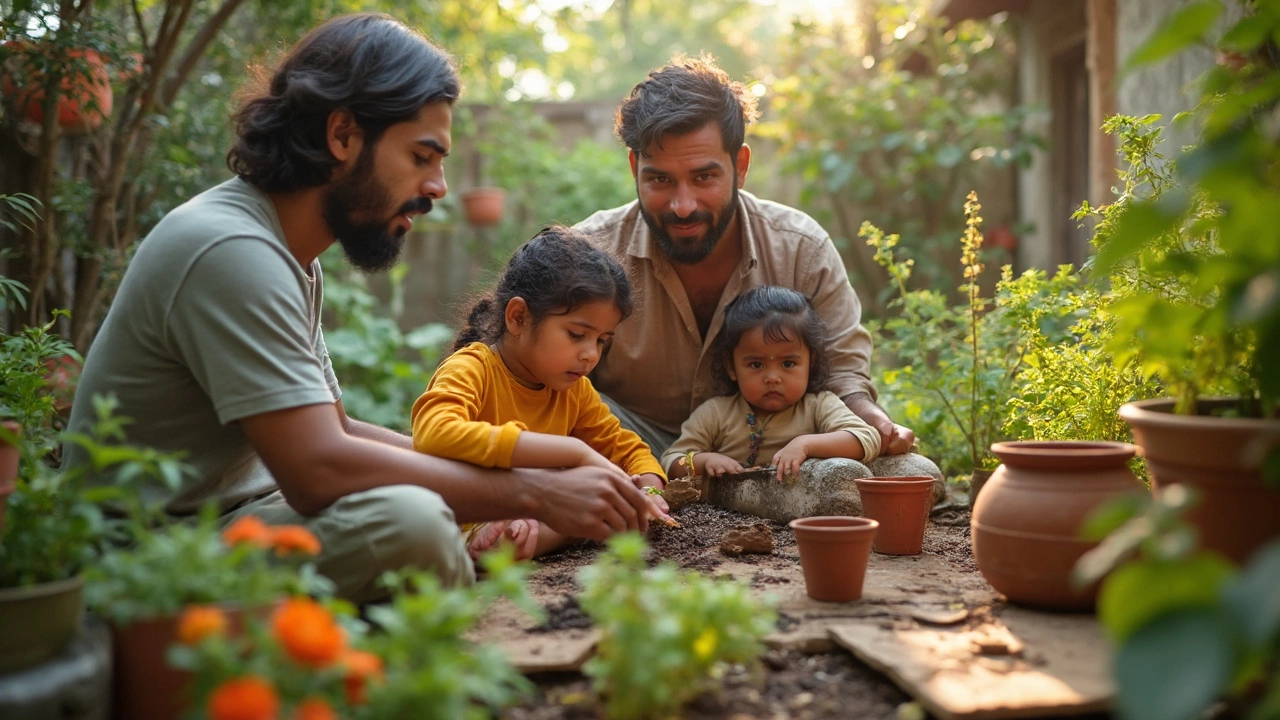Starting a sustainable garden doesn’t need to be complicated or expensive. This article will walk you through simple steps to grow your own eco-friendly garden, focusing on practical techniques that save resources and support the local ecosystem. You'll find real-life tips on choosing the right spot, building healthy soil, picking smart plants, and managing your garden to use less water and chemicals. Whether you have a big backyard or a tiny balcony, these ideas will help you make a positive impact. Get ready to turn your outdoor space into a low-waste, green haven.
Sustainable Gardening Tips for Indian Homes and Balconies
When you practice sustainable gardening, a way of growing plants that works with nature instead of against it, using local resources and minimizing waste. Also known as eco-friendly gardening, it’s not about buying expensive gear—it’s about making smart choices every day. In India, where summers are harsh, monsoons flood, and water is precious, sustainable gardening isn’t a trend. It’s a necessity.
At its core, sustainable gardening means thinking ahead. You don’t just plant something and forget it. You ask: Where does this soil come from? Can I make compost from kitchen scraps? Is my watering system wasting half the water? The best gardeners here don’t rely on chemical fertilizers or imported mulch. They use composting, turning food waste into rich, natural soil that feeds plants without harming the earth. They fix drip irrigation, a system that delivers water straight to plant roots, cutting waste by up to 70% compared to buckets or hoses. And they learn to read their soil—knowing when it’s too dense, too dry, or too salty—so they can fix it with soil improvement, adding things like leaf mold, perlite, or cow dung to make it easier for roots to breathe and grow.
What you’ll find in these posts aren’t theory-heavy guides from faraway places. These are real fixes from Indian balconies, terraces, and backyard plots. You’ll learn how to stop rabbits from eating your zinnias without poison, why hydrangeas die on south-facing balconies, and how to make your dense clay soil crumble like cake with just three ingredients. You’ll see which plants bloom all year here, what to do when your drip lines clog, and how to grow tomatoes faster by understanding India’s seasons—not a UK calendar. No fluff. No jargon. Just what works when the temperature hits 40°C and your tap runs dry.
These tips aren’t for experts. They’re for anyone who’s ever looked at a wilting plant and thought, ‘There’s got to be a better way.’ Whether you’ve got a single pot on your balcony or a small patch behind your house, the same principles apply. Start small. Observe. Adjust. Repeat. The garden doesn’t care how big your space is—it only cares if you listen to it.
